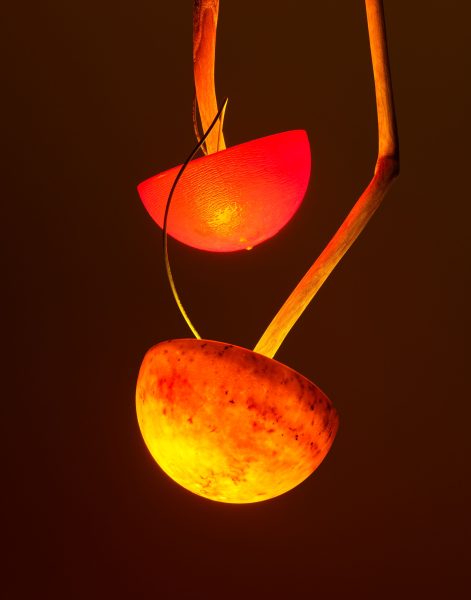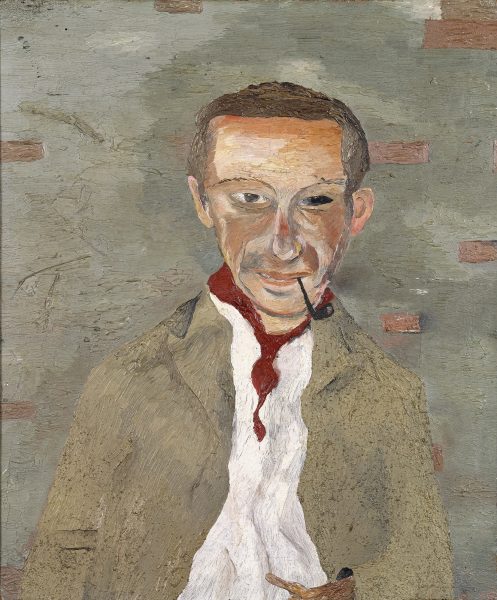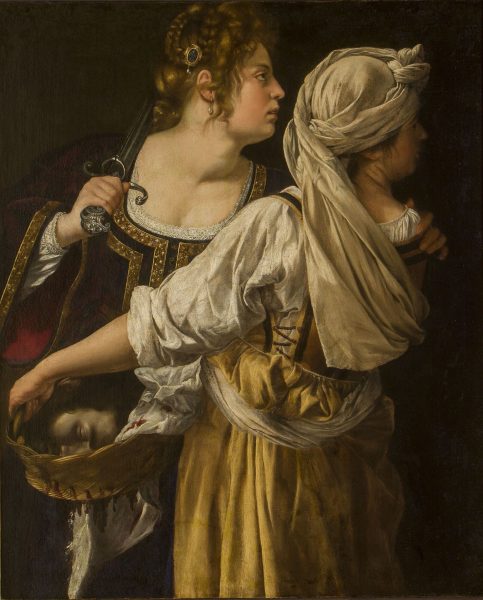Medaro Rosso

Medardo Rosso (1858–1928) – sculptor, photographer and trailblazing Italian visionary – considered by some to rival the great Auguste Rodin, has inspired generations of artists. Yet although Rosso helped shape modern art, his name remains one of art history’s better kept secrets.
As the title “Inventing Modern Sculpture” suggests, the latest exhibition at the Kunstmuseum Basel sets the record straight.
With around 50 of his sculptures and 250 photographs and drawings, this major exhibition reveals how Rosso blurred the boundaries between media, experimented wildly with light and material, and helped launch a new era of sculpture.
The programme isn’t just about looking back—it’s about seeing Rosso’s influence in action. The show brings together over 60 artists from the past 150 years, from Degas and Brâncuși to Louise Bourgeois, Phyllida Barlow, and Francis Bacon. Their works are placed in “conversations” with Rosso whose spirit of experimentation still pulses through contemporary art.
Don’t miss the chance to see Rodin’s iconic Burghers of Calais in the Kunstmuseum courtyard—one of the many powerful reminders of the creative energy that helped shape modern sculpture.

At the Kunstmuseum Basel, Basel, Switzerland until 10th August
kunstmuseumbasel.ch
Rebecca Horn, Cutting Through the Past
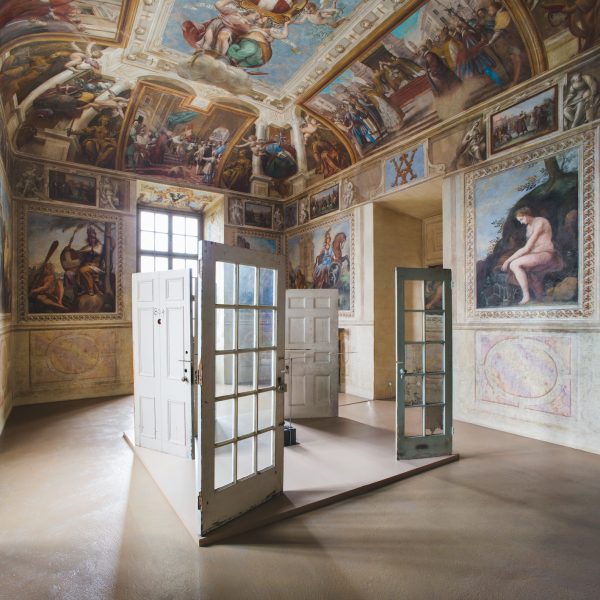
Turin’s wonderful museum of contemporary art, created in the former residence of the Royal House of Savoy a World Heritage Site, is doubly worth a visit this summer with a retrospective dedicated to Rebecca Horn (1944-2024).
Residents of Turin will already be familiar with her art through Little Blue Spirits, the outdoor installation that hovers around the dome of Santa Maria al Monte dei Cappuccini and which has shaped the city’s skyline since 2000.
Cutting Through the Past celebrates the pivotal role Horn has played in shaping contemporary artistic practice.
Horn’s work is known for its highly performative quality, with key themes such as time, memory, desire, and power dynamics taking centre stage.
Her fusion of the human and mechanical anticipated many issues in today’s increasingly complex technological society where AI has become a major player.
The exhibition includes a rich selection of installations, sculptures, videos, films, and drawings that span Horn’s career from the 1960s to her final works. Many pieces come from the Moontower Foundation in Bad König, Germany—established by the artist—and are rarely shown in public.
Highlights include iconic kinetic sculptures such as Peacock Machine, originally created for documenta in Kassel in 1982, as well as more recent works like Breathing Body. Monumental installations such as Inferno and Concert for Anarchy are also on display.
A central section of the exhibition features Horn’s early performances, presented through newly digitized large-scale video projections. Additionally, the exhibition showcases an important group of works from the Castello’s own collection, including immersive installations like Cutting Through the Past, which lends its name to the show.
In the wake of the artist’s passing last year, the retrospective presents a powerful group of late works titled Bodylandscapes—large-scale, painterly drawings rooted in performative gestures. Alongside the installation The Wheel of Time, these works reveal the spiritual dimension of Horn’s practice.
Until September 21st at Castello di Rivoli, Turn, Italy www.castellodirivoli.org/en
Mika Rottenberg: Vibrant Matter
In 2019 the renowned gallerist Hauser & Wirth acquired the lease to an 18th century hospital in Menorca and have since transformed it into a superb arts space with rotating exhibitions.
Whatever your feelings about the work of Argentinean born Mika Rottenberg – there’s a lot of reclaimed plastic mushrooms in this latest show – a trip to the gallery is an absolute must if visiting the Balearic island. Situated on an island now called the Isla del Rey, or Island of Kings, a shuttle boat from Mahon run by Hauser & Wirth gets you there in 15 minutes.
Once there you will learn something of the fascinating history of this magnificent and much loved building, a former Royal Naval hospital built in 1711, includes suggestions it was modelled (ironically) on designs pirated from Christopher Wren’s studio.
The building was almost derelict before restoration work by a group of volunteers called the Friends of the Island Hospital started in 2000. A mini museum with historical hospital objects, including books and surgical instruments of varying degrees of horror, was briefly created but the arrival of Hauser & Wirth has been transformative and the building’s future is thankfully secured.
New York-based artist Mika Rottenberg uses film and sculpture to explore the concepts of work and value in a capitalist world – her compilations show the inherent beauty and also absurdity of places such as a pearl factory in China.
Each film is presented within a theatrical installation made of objects from the bizarre parallel worlds in her videos: sacks of pearls, deflated pool toys, plastic flowers and sizzling frying pans frame the disorienting films.
As with all Hauser & Wirth’s best exhibitions, this is a captivating experience that works on many levels in an exceptional environment.
Until 26th October at Hauser & Wirth, Menorca, Spain
menorca.hauserwirth.com
Georges Mathieu: Gesture, Speed, Movement
This summer is the last chance to visit the famous Pompidou Centre in Paris for the next five years. A major renovation programme is required to address problems of accessibility, safety and asbestos in the building.
Designed by a team of architects including then unknowns Richard Rogers and Renzo Piano, it was certainly controversial when it opened in 1977 due to the decision to place all its innards – pipes and tubes – on the outside, making more space inside. “Paris has its own monster,” said Le Figaro, “just like Loch Ness.”
But it was also popular with the public and came with a new piazza where street entertainers soon gathered. Visitors flocked to ride the escalators which gave sweeping views across Paris. Half a century later, it’s a much loved landmark building in need of TLC.
During the closure, as we reported in the last issue, partner venues across Europe will borrow artworks through the Constellation programme.
Among these off site programmes is one at the French mint (Monnaie de Paris) devoted to the work of Georges Mathieu (1921-2012) , a distinctive but controversial French artist whose distinctive pictorial language bursts with energy and could be likened to some graffiti art of today.
One of his major collaborations was with the Monnaie de Paris, for whom he created a series of medals. But it’s not just a show for coin freaks – Mathieu played a significant role in the development of Abstract Expressionism which his spontaneous gestural paintings marked by speed of execution and raw emotion, which he called ‘ lyrical abstraction’. As early as the 1940s, Mathieu wanted to showcase his work alongside that of artists he felt close to, such as Jackson Pollock, and here he gets that chance with major works by some of the Abstract Expressionists featured in the exhibition.
Until 7th September at the Monnaie de Paris, Paris, France
www.monnaiedeparis.fr
www.centrepompidou.fr
Cedric Morris: Artist, Plantsman & Traveller
The Chelsea Garden Show always brings a crop of botanical exhibitions with it. Among them was ‘Garden to Canvas’ at the Philip Mould Gallery which was dedicated to the painter Cedric Morris (1889-1982) and the restoration of his beloved garden at Benton End in Suffolk. It was at this 16th century manor that Morris founded the East Anglian School of Painting and Drawing and here students painted en plein air amid lush flowerbeds and wild borders. The house was later gifted to the Garden Museum and the garden will be open to the public next year but in the meantime a major presentation of Morris’ work in the North of England explores the life and work of the nonagenarian.
Featuring loans from Tate, National Portrait Gallery, Gainsborough’s House and Philip Mould the works on show range playful pencil sketches of customers in Parisian and Algerian cafes during the early 1920s to the landscapes and views made in later life while travelling on plant-finding trips. Among these works there are also detailed drawings of such esoteric items as iris seeds, revealing the botanist at the heart of the painter.
A pioneer of naturalistic planting and lover of biodiversity, Morris also bred many plants including 90 varieties of bearded iris and his many paintings of this majestic plant have few peers.
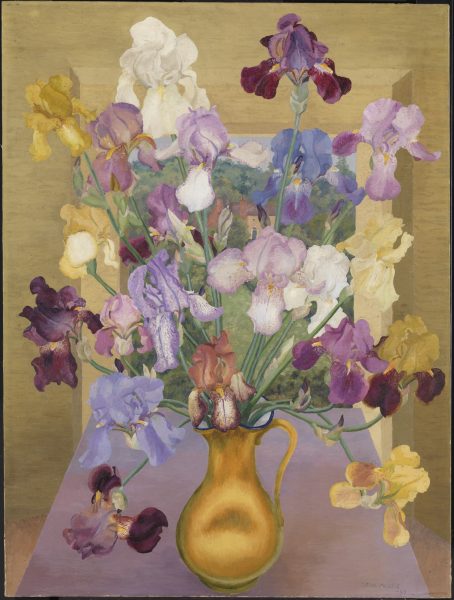
Until 12th October 2025 at the Granary Gallery, Berwick on Tweed.
Artemisia Gentileschi
Highlights of this exhibition devoted to a rare professional female artist working in 16th century Rome and Florence include several self portraits. Artemisia Gentileschi (1593 – 1656) – well known and successful during her day – began her career making works in the manner of Caravaggio, often choosing female subjects from mythology and indeed often painting herself into the roles. Some 40 of her grand Baroque paintings go on show this summer at the Musée Jacquemart-André in Paris. They show much originality and skill but also throw light on the trials and tribulations of female artists attempting to work in a man’s world.
Until 3rd August at the Musée Jacquemart-André , Paris, France
Helen Frankenthaler: Painting Without Rules
A giant canvas placed on the studio floor and then buckets of colour spilled onto it. You get the picture. We might immediately think of Jackson ‘The Dripper’ Pollock. But this is Helen Frankenthaler (1928-2011) and while Pollock had a major impact on Frankenthaler, the results of their giant-canvas-on-the-floor methods are oceans apart. In contrast to the bold heroics of the drip paintings, Frankenthaler’s paintings have an ineffable lightness of touch, an almost mystical quality and in their use of layering are closer to Rothko than Pollock.
Rothko’s luminous canvases made a strong impression on Frankenthaler who went on to develop a technique known as soak-stain which involved applying paint diluted with thinners onto vast unprimed canvases , creating effects is some ways similar to watercolours.
She used brushes and sponges , or just poured the paint directly allowing it to spread and blend naturally, creating subtle and unique chromatic interactions. She was a master of soft edges and translucent overlays.
The current show of Frankenthaler’s work at the iconic Guggenheim Bilbao includes works produced between 1953 and 2002 and places them in dialogue with paintings and sculptures by some of her contemporaries including Jackson Pollock, Anthony Caro, Kenneth Noland and Mark Rothko.
Until 28th September at the Guggenheim, Bilbao, Spain.

